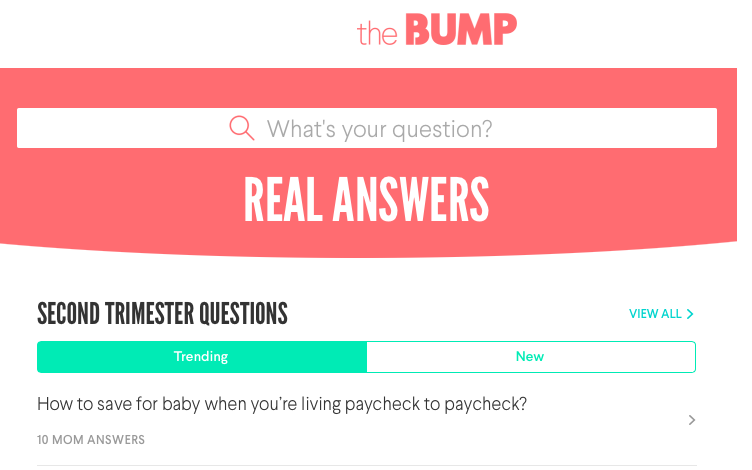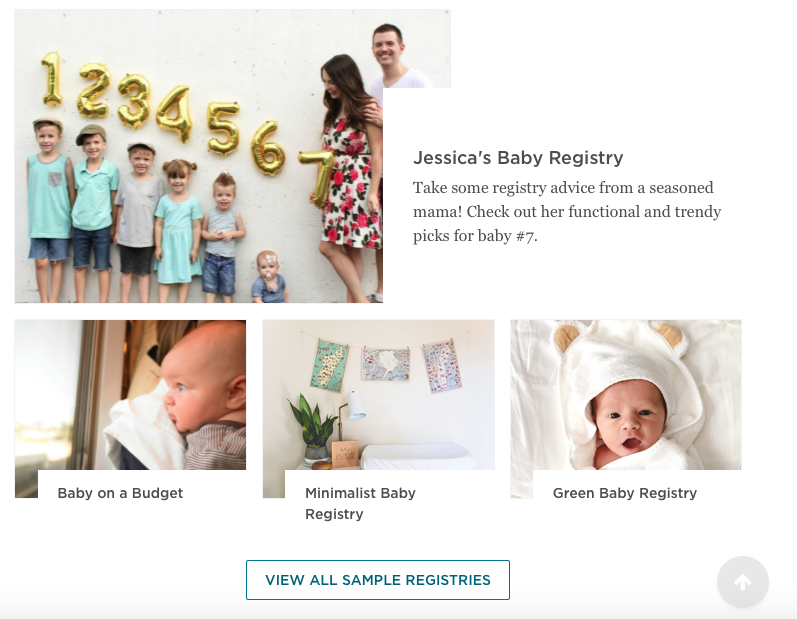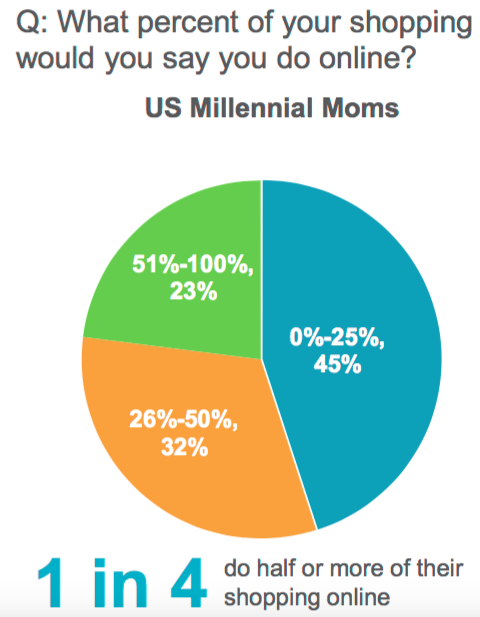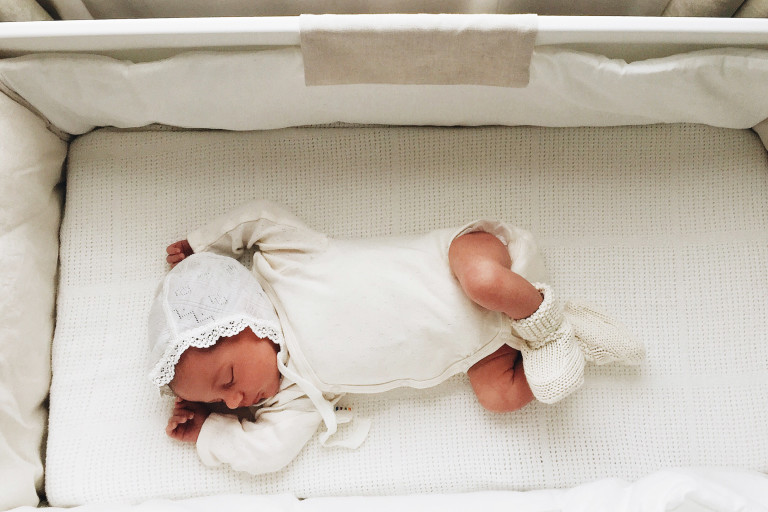Marketing to Expectant Mothers
What can the modern mom-to-be expect when she’s expecting? Two things are certain: she can expect to have a lot of questions and she can expect to buy a lot of baby gear. Brands who fulfill her needs in those two categories–reliable information and quality products–are going to be best positioned to market to her. But in order to do so, it’s important to know who exactly the expectant mother is.
That’s easier said than done. Today’s new American moms don’t act like June Cleaver or Carol Brady, and they don’t just eat pickles and ice cream. They are more likely to be rocking their bumps, checking their pregnancy apps and working full time. While today’s expectant mothers are diverse in background, culture and buying habits, they do have one thing in common: 90% of new moms are Millennials.
Millennial moms are more likely than past generations to be bilingual and multi-cultural, so brands should be representative in their messaging to earn Millennial mom trust. What else do we know about new moms? They’re short on time. Up to 65% of women with children under the age of six work, and over half are unlikely to live near family members who can help. So who is left to share information and products that will make their lives slightly easier?
You.
Here are three places to start.
Answer her questions.
For such an educated generation, it is unlikely that today’s new mom spent a lot of time during her childhood learning how to care for babies, and raising children today comes with different standards than it did 30 years ago when car seat laws had just been mandated. Aunt Marie’s unsolicited pregnancy advice is great, but sometimes expectant mothers need more relevant sources of information. What better place for a Millennial to start than Google?
I told you that new moms can be certain to have a lot of questions, and I know that from experience. Here’s an accurate depiction of my search history while pregnant:
- What is the safest infant car seat 2016
- Are crib bumpers safe
- Does insurance cover breast pumps
- Best maternity clothes for work
- What to pack for an infant in daycare
- What are safe ways to induce labor
What did I find? I found content: articles, lists, blog posts filled with links. The site that answered a lot of my questions was a baby registry service. Babylist allows moms-to-be to “pin” items from any online retailer to an all-inclusive registry. It also creates great content: blog posts, answers to popular new mom questions, and yearly product reviews. Another place I turned for information was The Bump, a website and app that follows a pregnancy from conception to birth.
Babylist answered questions I didn’t even know I had. Like many modern new moms, much of what I read about pregnancy and preparing for baby was from the screen on my phone. As time went on I started to notice, as if the internet was learning from my search history, more and more pregnancy-related ads on non-pregnancy sites sharing relevant content tailored to my interests. Even when I was looking for answers instead of products, sites with strong content could influence my buying habits with product recommendations–especially those that were reviewed by other moms.
And that’s the other place new moms turn to find information: other moms. My friends and I have a lot of overlapping products in our nurseries because we ask each other for recommendations. There are so many products and services out there; we need to have someone filter, answer, and recommend. Babylist and The Bump both showcase product rankings and reviews from other moms and generate “must-have” lists and sample registries for different kinds of shoppers.
While it may seem like the internet isn’t an intimate place to seek information about pregnancy and parenting, brands who have been able to foster community among new moms experiencing a season of life together are able to earn their trust. New moms need a village, and today that village includes both close friends and internet strangers.
Pin it, heart it, like it.
Social media platforms Pinterest, Instagram, and Facebook offer inspiration, companionship, and oh-so-many product recommendations. When I was pregnant, much of my information seeking was done on my phone, and my shopping was, too. This is normal, according to this study from a babycenter and Iab collaboration.
My shopping process would go something like this:
- Learn from one of my many baby apps (The Bump, babycenter, What to Expect) that I might like to have the baby sleep in my room for the first few months.
- Search Pinterest for bassinet options.
- Pinterest links me to Babylist, where I read the article Best Bassinets of 2017.
- Narrow it down to two because I can’t decide if I should prioritize price or design.
- Become distracted. Check Instagram.
- See one of my two bassinet options on my Instagram feed from a new mom influencer that I followed through her pregnancy. It’s in a bright airy nursery and holds a perfect, sleeping newborn.
- Add said bassinet to my Babylist registry.
All from my phone. True, many pregnant moms are likely exercising or working or making better use of their time than I did, but marketers who are trying to reach expectant mothers should understand habits like these that lead to purchases. And they should ask themselves a few questions:
- Is my website mobile?
- Can my product or service be accessed and purchased online?
- Could a user Pin it or add it to a registry?
- Does it have trusted reviews?
- Is it shareable? Would a new mom want to photograph it, pin it, heart it or like it?
Much of the share-ability is in the details. Shopping for a new baby can be an emotional experience. When so much of pregnancy is spent imagining what is to come, a beautiful picture and trusted review make the idea of using the blanket, bottle or toy more tangible. For this Pinterest-raised cohort of moms, brands who personalize the shopping experience with beautiful packaging, customized notes, and an engaging social media presence are in an even better position to be shared through the new mom communities.
Save her money.
It isn’t just pregnancy hormones that make shopping for baby a tearful experience. Some estimates say that new parents can expect to spend $20,000 by baby’s first birthday on gear, healthcare, and childcare. Let’s make at least one part of pregnancy less painful for mom, shall we? There are a lot of ways to save her a little money, whether it’s a first-time buyer discount in a newspaper ad, a promotional code given out at first-time parents event, or a bundle (pardon the pun) of products shared online. Amazon, Target and BuyBuy Baby offer credits or discounts for their registries. Pampers offers a rewards program. This article lists freebies for expectant moms from board books to Gymboree classes. Free is a great way to win loyalty, and loyalty is important when reaching a demographic who will be spending a lot in her near future.
Just remember that baby products aren’t the only items that fill a registry, and they aren’t the only items that can offer pregnancy deals. New moms may appreciate cosmetic products or clothing for themselves, one last pre-baby getaway or a super-convenient meal service post baby. I’ve seen all of these items on registries: vacations, eyelash extensions and fitness programs.
It’s nice when brands remember that even though she’s shopping for a baby, mom might want to splurge on herself from time to time. Sifting through millions of questions and products can be exhausting (though not nearly as exhausting as the actual act of growing a human). When companies let her splurge, save her money and provide something meaningful on the other end of her search query, life might become a little bit easier for mom-to-be.





